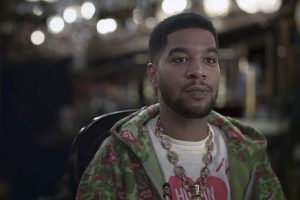New trends, social themes dominate New York Fashion Week
September 19, 2018
September is the time of year that introduces some fall favorites: Pumpkin Spice Lattes from Starbucks, Halloween costume ideas and an event that comes only twice a year: New York Fashion Week. If you aren’t aware, NYFW is a huge event for fashion designers, where shows and performances are presented to the public and those in the fashion industry in order to publicize most brands’ spring and summer 2019 releases.
It also acts as a chance for smaller brands to get some exposure and showcase their material to the fashion world. There are many shows that are open to the public—meaning free admission if you reserve a ticket ahead of time—so Iona students can easily take the 30-minute train to New York City to experience the event for themselves. Unfortunately, NYFW 2018 has come and gone, so you’ll have to wait until the spring for the next one. However, if you weren’t able to attend any shows this past week, here’s some insight on what you might have missed.
One of the most recognized brands of this year’s NYFW was Pyer Moss. Founding designer Kerby Jean-Raymond has described the brand as an “art project” or a “timely social experiment” at times, according to the NYFW website. In this year’s show, the designer brought a very strong message. In an interview with Vogue Magazine, Jean-Raymond said that the Pyer Moss Spring/Summer 2019 collection focused on “what the African-American experience would look like without the constant threat of racism.”
His pieces focused on African American landscape artwork, and featured pieces read sayings such as “see us now?” and “stop calling 911 on the culture.” Head to the VOGUE Runway app to see more of the collection, and keep a look out for Iona junior Joseph Baxter, who was a model for Pyer Moss this year.
Sally LaPointe is another brand that definitely had an aesthetically pleasing collection this season. Sally LaPointe is a women’s brand based in New York City. Her collection this past week focused on a variety of fabrics and patterns that came together to create monochromatic (one color) looks, which can be considered LaPointe’s staple. The combination of different textures and patterns diversifies the monochromatic outfits in order to add more dimension to each style.
Her collection is expected to become very popular because of the rise of monochromatic styles in modern fashion. Now more than ever, the technique is not only being used in fashion, but in beauty and décor as well. Models wear these styles with natural makeup, a wet-look hairstyle and accessories such as sunglasses to tie the whole look together. LaPointe’s collection consisted of several looks matching this overall theme such as black denim two-piece sets, beige shimmer jackets and reworked magenta pant suits. Hints of sheer could be spotted across the runway. To take a look at the show and backstage photos, go to nowfashion.com.
One brand really made an impact on this week. Tibi is a contemporary womenswear brand founded in 1997 by Amy Smilovic in Hong Kong, but now operates a flagship boutique in New York City. The focus of her Spring/Summer 2019 collection was on androgynous clothing. Even though her brand is focused on womenswear, males still took to the runway, sporting the blazers, suits, overcoats and more, designed for both males and females.
The collection used neutral colors such as black, navy and beige, but also had many pops of pastel colors, such as orange, yellow and blue. She paired most looks with simple, comfortable footwear such as flip flops and sandals.
“It was just about focusing on not separating your life into these moments, like I’ll relax on vacation and do the grind now,” Smilovic said about her collection backstage at NYFW. “It was more about having that type of ease, color and beauty in a very urban environment.”
New York Fashion Week is and will always be a time for the public to not only find new trends, but to learn more about designers and the fashion industry as a whole. Keep a look out for the styles seen on the runway this year, which are usually released around the following February and March.







